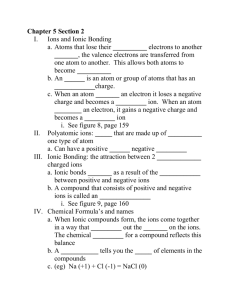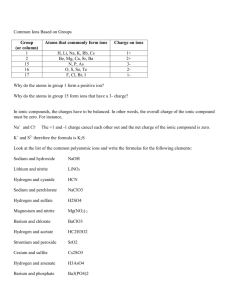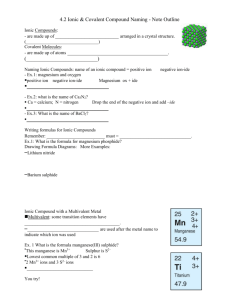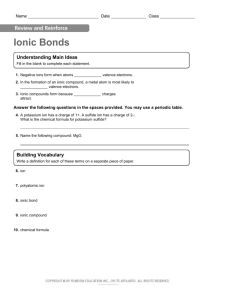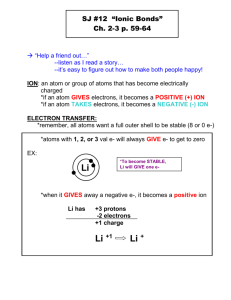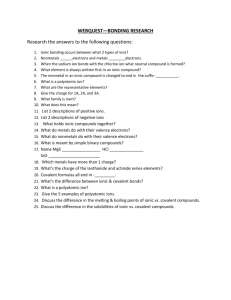Ions
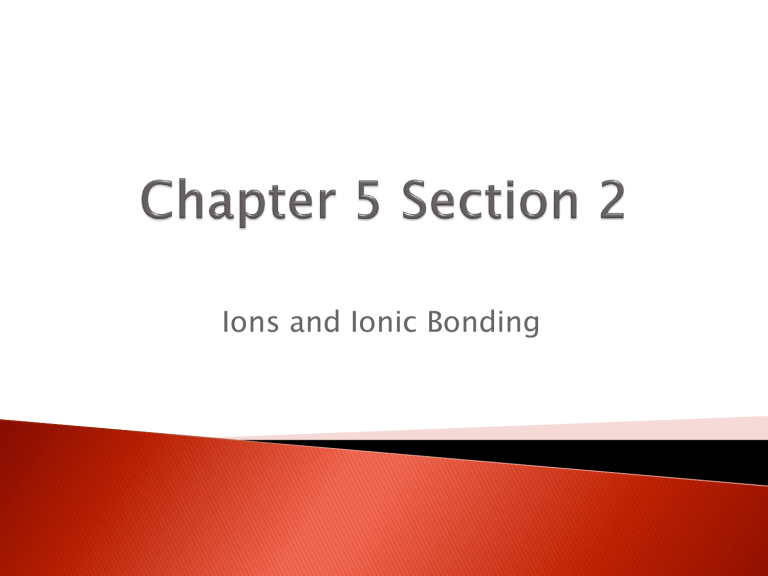
Ions and Ionic Bonding
Atoms that lose their valence electrons to another atom, the valence electrons are transferred from one atom to another. This allows both atoms to become stable
An ion is an atom or group of atoms that has an electric charge.
When an atom loses an electron it loses a negative charge and becomes a positive ion. When an atom gains an electron, it gains a negative charge and becomes a negative ion
Polyatomic ions: Ions that are made up of more than one type of atom
Can have a positive or a negative charge
Ionic Bonding: the attraction between
2 oppositely charged ions
Ionic bonds form as a result of the attraction between positive and negative ions
A compound that consists of positive and negative ions is called an ionic compound
◦ When Ionic compounds form, the ions come together in a way that balances out the charges on the ions. The chemical formula for a compound reflects this balance
A subscript tells you the ratio of elements in the compounds
(eg) Na (+1) + Cl (-1) = NaCl (0)
◦ Ionic compounds are usually hard, brittle, crystals that have high melting points. When dissolved in water or melted, they conduct electricity
◦ Sodium Chloride Sodium Hydroxide
A crystal is an orderly, 3-D pattern of ions or atoms in a solid
◦ In an ionic compound every ion is attracted to ions of opposite charge that surround it.
◦ The pattern formed by the ions remains the same no matter what the size of the crystal
◦ When you heat a substance its energy increases, therefore the ions have enough energy to overcome(break) the bonds that join them, and it melts into a liquid Ibuprofen MP
A solid ionic crystal will not conduct electricity, however, a melted or dissolved crystal will conduct
Hydrogen has one valence electron, so it is placed above the alkali family even though it is a nonmetal and has different properties than the alkalis. It is very reactive
